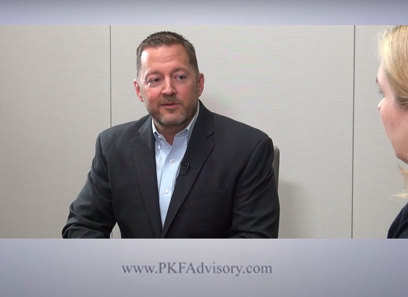M&A Outlook: Understanding the Key Drivers of Change in Global Mergers and Acquisitions
M&A Outlook: Understanding the Key Drivers of Change in Global Mergers and Acquisitions
Blog Article
The Influence of Mergers and Acquisitions on Market Dynamics and Competitors
The landscape of acquisitions and mergings presents an intricate interplay in between cultivating growth and possibly undermining affordable stability within markets. As business seek calculated placements to enhance performance and technology, the implications on customer option and market rates warrant mindful scrutiny. While the advantages of such consolidations can be obvious, the darker effects usually arise, elevating crucial concerns regarding market power and the regulatory frameworks created to keep balance. This discussion welcomes an exploration of the subtleties included, exposing exactly how these company maneuvers reshape the very foundations of competitors.
Introduction of Mergers and Acquisitions
Mergers and procurements (M&A) play a critical role fit the landscape of modern organization, as firms look for to boost their one-upmanship and attain tactical objectives. M&A deals involve the debt consolidation of companies or properties with numerous financial purchases, including mergings, where two companies incorporate to develop a new entity, and acquisitions, where one company acquisitions one more outright. These tasks are driven by a myriad of elements, such as the search of synergies, diversity of item offerings, and the wish to enter new markets.
The M&A process commonly entails numerous stages, including strategic preparation, due diligence, negotiation, and assimilation (Emerging Market Opportunities). Firms carry out thorough evaluations to identify prospective targets that straighten with their development techniques and evaluate the functional and monetary effects of a transaction. Regulatory factors to consider additionally play an essential function, as antitrust laws are developed to stop monopolistic methods that could damage competition
As organizations browse the intricacies of M&A, the outcomes can considerably influence stakeholders, consisting of staff members, clients, and investors. As a result, understanding the characteristics of M&A is necessary for evaluating their implications within the broader context of market actions and competitive placing.
Positive Effects on Market Dynamics
The consolidation of companies with procurements and mergers can result in significant positive results on market dynamics. Among the key benefits is the enhancement of functional effectiveness. By incorporating sources, companies can improve processes, reduce redundancies, and accomplish economic situations of scale, ultimately decreasing costs and boosting success. This efficiency can equate into lower costs for customers, fostering a much more competitive market setting.

Additionally, enhanced market share resulting from mergings can give companies with higher bargaining power with suppliers and providers, facilitating improved terms that can profit the general supply chain.
Negative Consequences for Competitors

Furthermore, the elimination of competitors through acquisitions can suppress technology. When principals combine, smaller sized firms may struggle to compete, leading to a homogenization of solutions and products. The resultant lack of competition can develop a setting where continuing to be business have less incentive to spend in r & d.
Moreover, mergers can create obstacles to entrance for brand-new firms, as the merged entity may leverage its enhanced resources to control the market. This can discourage possible participants, consequently restricting competitors and technology in the lengthy term.
Inevitably, while purchases and mergers can provide critical advantages, their prospective to threaten competitors necessitates cautious factor to consider of their wider effects on the marketplace dynamics. The equilibrium between development and competitive integrity stays a vital concern in reviewing such corporate approaches.
Regulative Factors To Consider and Oversight
Regulative structures play a vital role in forming the landscape of acquisitions and mergers, making certain that market dynamics continue to be fair and affordable. These structures are designed to stop anti-competitive behavior and to secure customer interests. Regulative bodies, such as the click to investigate Federal Profession Commission (FTC) in the USA and the European Payment in the EU, assess suggested mergings and acquisitions based upon their potential effect on competitors within the marketplace.
The assessment process entails a comprehensive investigation of the marketplace share, possibility for monopolistic practices, and the overall economic ramifications of the purchase. Regulatory authorities typically enforce problems or call for divestitures to mitigate concerns over decreased competition, making sure that the joined entity does not control the marketplace unjustly.
This collaborative approach aids to cultivate a balanced regulatory environment that advertises advancement while protecting competitive techniques. Inevitably, efficient regulatory factors to consider are necessary in preserving market integrity and motivating healthy and balanced competition in the face of advancing service landscapes.
Situation Studies and Real-World Instances
Often, study of remarkable mergings and acquisitions highlight the profound effects these deals can have on market characteristics. The 2000 merger in between AOL and Time Warner offers as a prime example, where the anticipated harmonies failed, causing a drastic decrease in shareholder worth. This instance underscores just how cultural imbalances and overestimation of market capacity can interfere with competitors.
On the other hand, the procurement of WhatsApp by Facebook in 2014 exemplifies a site link successful combination that improved the communication landscape. Emerging Market Opportunities. Facebook leveraged WhatsApp's individual base to enhance its service offerings, successfully increasing its market supremacy while maintaining competition in the messaging field
Another considerable instance is the merger of Exxon and Mobil in 1999, which produced among the globe's biggest oil companies. This debt consolidation led to higher effectiveness yet raised worries concerning minimized competitors in the power market, prompting regulative examination.
These instances highlight the intricate interaction in between mergings and acquisitions and market dynamics, showcasing both the potential benefits and pitfalls that can arise, ultimately shaping affordable landscapes throughout sectors.
Verdict
Mergers and procurements play a click here now pivotal duty fit market characteristics and competitors. While they can cause boosted effectiveness and advancement, they likewise position risks such as reduced competitors and greater customer costs. Effective regulatory oversight is essential to make certain that the advantages of M&A tasks are optimized while reducing negative effect on market competitors. A balanced approach can aid protect consumer well-being and cultivate a competitive landscape that encourages both development and development.
One significant issue is the possibility for minimized market competition, as mergings frequently lead to the loan consolidation of market power among less players. Governing bodies, such as the Federal Trade Payment (FTC) in the United States and the European Commission in the EU, examine proposed purchases and mergings based on their potential effect on competition within the market.

Mergers and acquisitions play a crucial function in shaping market characteristics and competitors. Effective regulatory oversight is necessary to make sure that the benefits of M&A tasks are optimized while reducing adverse effects on market competition.
Report this page